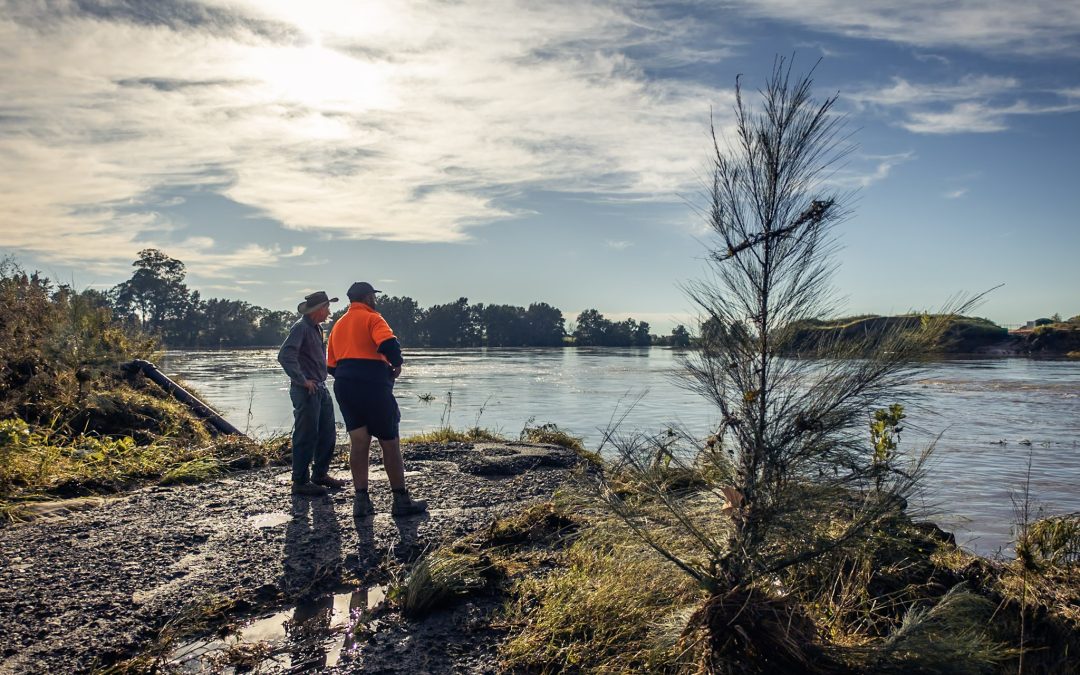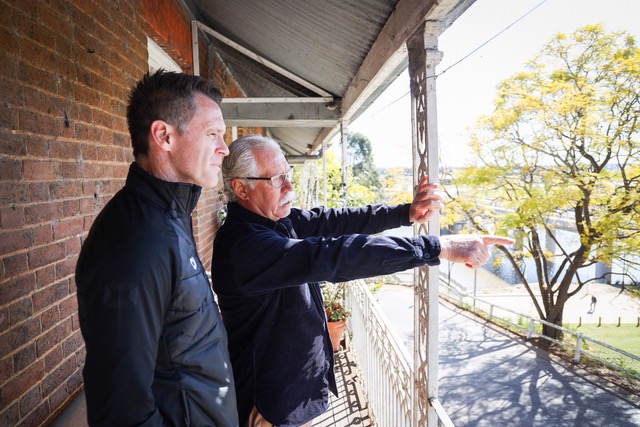From the Editor Here we are...


From the Editor Here we are...

The NSW Government is rethinking its water...

Residents and ratepayers have slammed the Hawkesbury City...

In an attempt to keep homeless squatters off their property, the new owners of the old Holden site in Windsor have fenced off the only entrance to the Green Hills Burial Grounds, which is on landlocked Council-owned land along South Creek.
Green Hills was the original Colonial name for what is now the town of Windsor and the Burial Grounds are one of the oldest Colonial remains, where it is thought many local Aboriginals are buried, along with early settlers.
A local Aboriginal woman who had been temporarily homeless and was one of those briefly camping near the Creek, told the Post it was not right that locals – both Aboriginal and descendants of early settlers buried at the Grounds – no longer had access. She said it was an issue that should bring every local together to protest about the lack of access.
“It’s a sacred area,” said the woman, who does not wish to be named. “My people are buried there and if I want to go and pay my respects and now I can’t. We could always go there before.”
In the early days of European settlement of the Hawkesbury, burials certainly took place around the South Creek area, and while the evidence does not point exactly to the current site, it was decided to commemorate those early burials and make use of the site, not least because Council owned it.

Close as you can get – pic by Paul Caleo
The previous owners of the sprawling Holden building and land had allowed open access to the historic burial grounds across the bottom of their property, next to the Creek, but new owners Preeti Karan and her husband – they also own the Freemans Reach servo – decided to fence it off, they say after ongoing problems with homeless squatters down by the Creek.
Windsor local Paul Caleo, who took our pictures, confirmed, “not long ago there were homeless people camped there in an elaborate camp, with vehicles onsite and angry dogs when I would cycle past”.
The Karans bought the large empty property on Macquarie Street recently and are busy revamping it and already have a car workshop and offices on site.
They are now in urgent talks with Hawkesbury Council to try and break the Burial Grounds stalemate and allow future access.
Ms Karan said she had no problem with people visiting the Burial Grounds but she did have a problem with the squatters – who have now been locked out and have left. She said they were often aggressive, and claimed they left numerous empty drinks bottles and a large amount of rubbish, which the Karans had to get cleaned up.

Access to Greenhills Burial Grounds used to be via this track, now fenced off. Pic – Paul Caleo
“They were even coming in here [to the main building] and being very abusive and using bad language. It has been very disruptive and disrespectful. The police have been out several times.
“We really had no alternative. We had to fence it off. And it is our property.”
Ms Karan, who is a solicitor, said she had a lot of sympathy for the plight of the homeless, and had even suggested she could help point them in the right direction for assistance.
Ms Karan said she is confident a solution will be reached with the Council to allow access to the Burial Grounds. She said she understands the cultural issues and that people do want and need to mourn their ancestors.
The broad Creek area was the earliest Colonial burial ground in the Hawkesbury district, used for burials from around 1806 to 1810, after which Governor Macquarie decided the new cemetery should be where St Matthew’s Church of England now stands.
From 1810, Green Hills was still used for the burial of convicts, with the last convict being buried there in 1834.
It is believed to be the resting place of Bexley the Highwayman, a bushranger who was hanged for robbery on Pitt Town Road in 1884, Philip Cunningham, the Irish political prisoner who led the Vinegar Hill uprising at Castle Hill on March 5, 1804 and First Fleeter Edward Whitton, buried in 1802, and his wife Anne Slater who was buried in 1806.
Jeff Organ, who is Director Infrastructure Services at Hawkesbury Council, told the Post, “Council staff and the public had previously been able to informally access the site through 27 Bridge Street, Windsor, as it was not fenced off.
“The new owners have been contacted and they have advised that they fenced off this access to secure their site from trespassers. They were open to formalising an access arrangement and Council is continuing discussions with the owners.
“Whilst we are trying to resolve the matter as quickly as possible, the arrangements will take time to be agreed upon and formalised. At this stage there is no alternative route for access.”
Main pic – Paul Caleo
As you’re here…
Please help us continue to provide quality daily online news as it happens. Support Hawkesbury Post from as little as one dollar, right here.